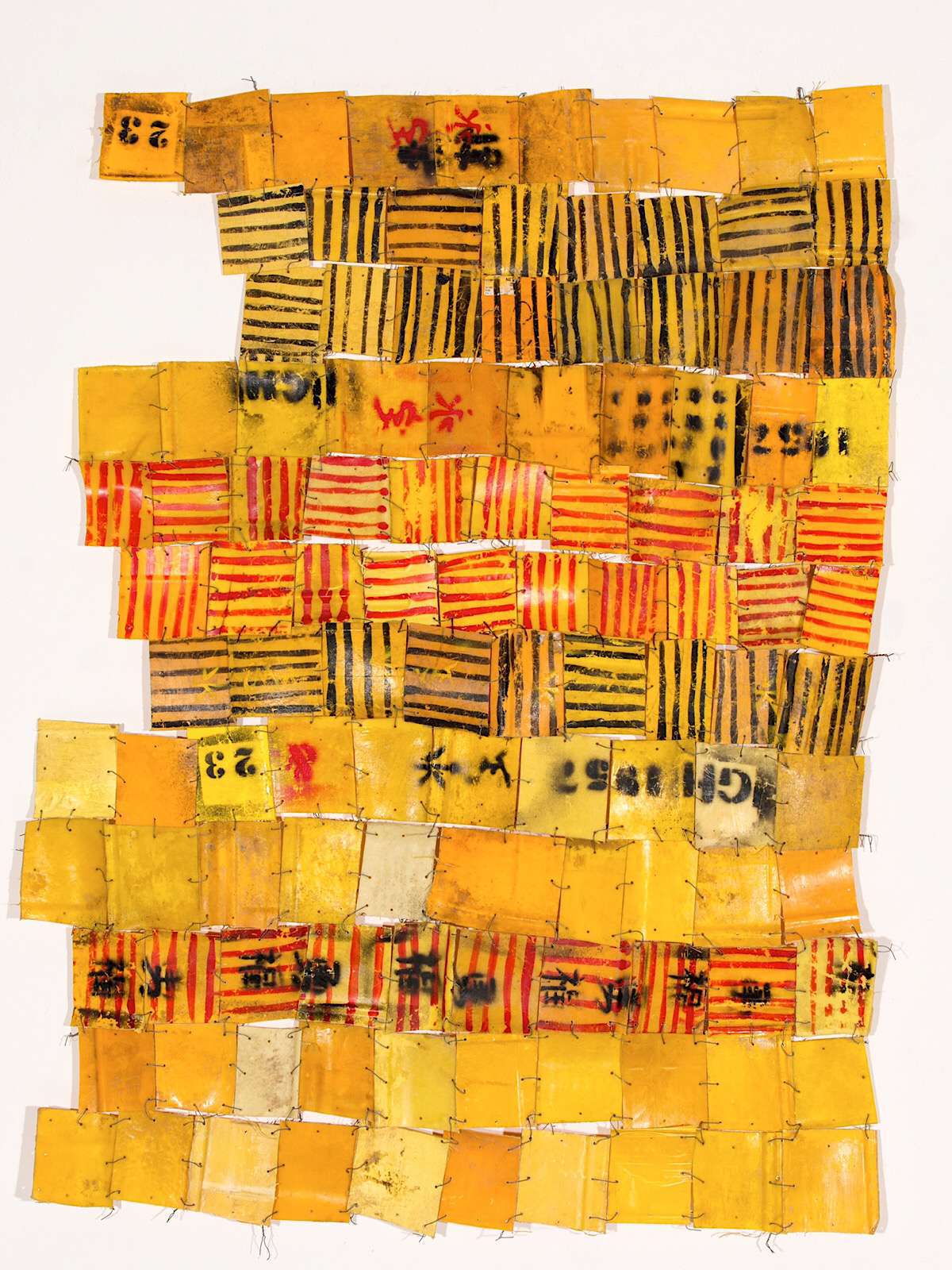Born in 1985 in Accra (Ghana), where he lives and works, Serge Attukwei Clottey is internationally known for his participation in numerous exhibitions in Europe and the United States, most recently at the Facebook headquarters in San Francisco in 2018, where he created the monumental installation of the work Kusum Gboo Ga (Tradition Never Dies).
In Clottey's work is the dialogue with the cultural and political history of his country, Ghana. The exhibited works, huge carpets, made up of yellow plastic tiles joined together by copper wires, are made using the yellow tanks that the artist, together with his collective, have collected on the streets and beaches of Accra.
These containers, the gallons, were brought from Europe during the colonial era and are a huge ecological problem in Ghana, where there are few disposal and recycling initiatives. Known as 'Kufuor' gallons – after John Kufuor, the second president of the Fourth Republic of Ghana – these canisters have historically been linked to severe water shortages in Accra. The gallons were brought to Ghana from the West, mainly from Europe, as containers for cooking oil or petrol, and were then reused by the Ghanaian population to conserve water and deal with the serious problem of drought.
Attukwei, moved by the objective of returning to the area of origin an object with a shape but above all with a different value, began to reinvent the purpose of these objects as a founding concept of an artistic movement which he called Afrogallonism, which can be defined as a successful experiment of environmental and social justice. The idea of Afrogallonism is therefore to change the shape of an object, which has become symbolic for the population and which represents a huge problem for its country, through an artistic concept that explores the relationship between the object itself and consumption and the necessities for life in modern Africa.

Attukwei transforms waste into art, through easily available material with a very strong political value, investigating the powerful representation of everyday objects and exploring personal and political narratives deeply rooted in stories of exchanges and migrations.
His works, which betray the link with the African textile tradition of Kente, are daring assemblages that explore the languages of form and abstraction with which he elevates the material to a powerful symbol of the economic system, trade and reuse, but also of globalization and the role of Ghana in this context. The Ghanaian artist uses the gallons by cutting them into fragments to reduce their volume and then creates this weaving process where he merges different stories because the gallons come from different people and from different parts of the country. Each plastic card has a different shade of yellow due to the different geographical origins, the original content (gasoline or oil) or the age of the barrels. “When I join the tiles through the artistic process the shape changes, the value changes and people's perception in considering plastic changes”. The cards also bear the signs that were used to recognize the chevrons by the owners or the bar codes that create a sort of camouflage fabric or Chinese characters, indicative of new references of power in Ghana.
Attukwei also repurposes jerry cans to create haunting masks, murals and public art installations. Fundamental to him is the notion of performance as a daily activity not only because, together with his collective GoLokal, he often exhibits alongside installations, involving his community in dialogue on issues of economic, environmental and social justice, but also for the ways approach to work, simply looking for material: “We have a very interesting way of working, especially when we go to the landfill, we dress like women and this is why so many women collect the stripes for me because they see that they are able to translate it into a visual idea for the benefit of the community by creating jobs to trade these objects. And again: ”People feel touched by these exhibitions and see that art can break down barriers. It's great for me because I see how art can play a creative role in the development of a nation."





